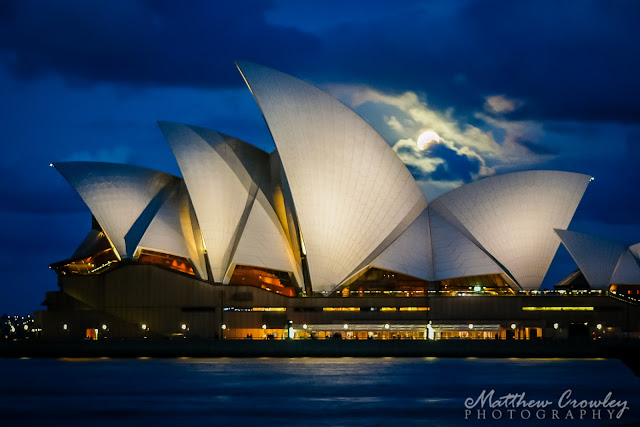 |
| Sydney Opera House at night |
 |
| The Eiffel Tower at Blue Hour |
Scour the Internet. You want to look for photos from the location you want to go. Now obviously, you don’t want to take the exact same photo as someone else has already taken, but in many cases you can get a good indication of what time of day/year the photos were taken so you know when to be there to get those shots. A lot of times photo sharing websites, such as Flickr, will have metadata that includes the time and date the photo was taken or, at the very least, keywords indicating sunrise or sunset. You can then confirm this information with many different applications; The Photographer’s Ephemeris, Google Earth, Mr. Sun. You can confirm exact times for sunrise and sunset and where the sun will be every minute in-between.
Plan out each day’s itinerary. I’m a sun chaser, meaning where I will be for sunrise and sunset will more than likely dictate the rest of the day. My wife often jokes that all of our trips revolve around the sun. And she’s 100% right. I plan out a reasonable driving distance between where I will be for sunrise and where I will be from sunset. Once I have those two items set, in my itinerary, I then plan for everything in-between, and sometimes afterward. I look for locations along the way, sometimes off the beaten path. If it seems interesting, and I can fit it into my itinerary, I will try to include it. The time around high-noon can be the hardest to determine. While good shots can still be had during this time, sometimes they cannot. You may want to consider using this time for rest, recreation, shopping or just used to drive to the next location, if they are a good distance apart. In order to calculate times, you need to know how long it takes to drive to a location, how long of a hike you will need to do once you get there.
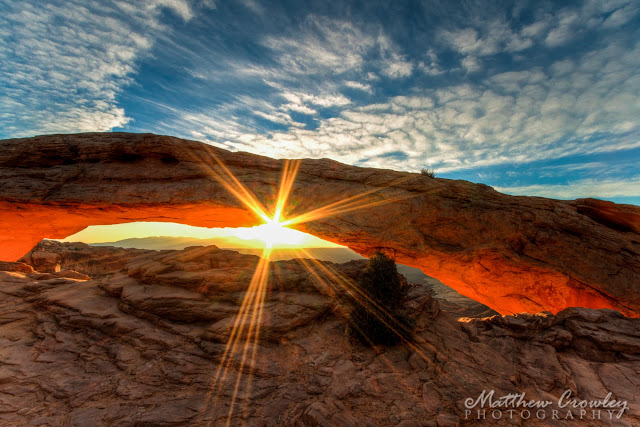 |
| "Good Morning, Canyonlands" |
 |
| Sunset at Pigeon Point Lighthouse |
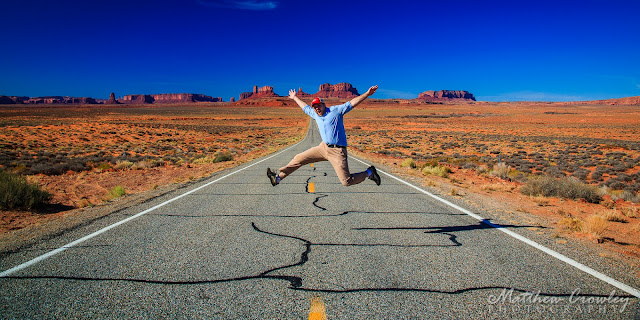 |
| "Might as well jump!" |
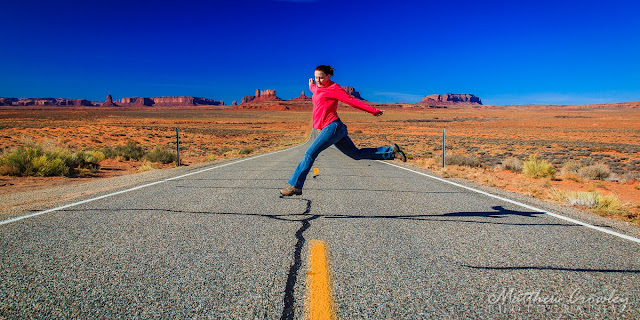 |
| "Go ahead and jump!" |
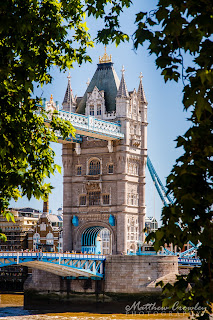 |
| The Tower Bridge through"a sneaky-good frame" |
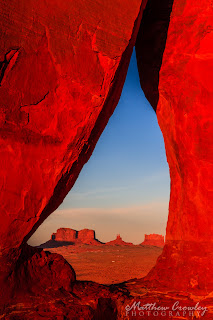 |
| Teardrop Arch |
Expect the unexpected. For better or for worse unexpected things can and will happen during your trip. A cloudy, foggy, rainy or snowy day can really do a number to your trip. So can a flight delay, road closure or accident. Even staying at a location too long can mess up the rest of your itinerary. You have to put contingencies and consolations into your itinerary. I try to keep my expectations low just for these reasons. There’s no more disappointing feeling than having a plan and not being able to execute it. You need to have backups in place. You need to identify the things on your itinerary that are most important to you and those that you could potentially do without, if circumstances arise. A good example; while doing research for Capitol Reef National Park, I read that the road to Lower Cathedral Valley was very primitive and, during wet conditions, could be impassible to even the best off-road vehicle. As this is a place I wanted to be for both sunrise and sunset, I needed to have alternatives in place in the event the road was impassible. I had a separate section of my itinerary in place just for that reason. When we arrived at Capitol Reef, I learned the road was indeed impassible, but having planned ahead, I already knew what my consolation would be. If I had not done my research and arrived there ready to travel down that road I know for sure I would’ve been disappointed and perhaps even pissed. Instead, we were able to salvage our time and use it towards another spot.
 |
| Can you see the road? Neither could we... |
Here is a sample day’s itinerary that I made before our most recent trip to the American Southwest:
Day 2 - Mar 8th (Friday) - Bryce Canyon NP to Capitol Reef NPNow there are a few things about this itinerary to mention. I didn’t explicitly plan bathroom breaks, as much as my wife jokes that I do, but I did leave extra padding between locations for them. I also left extra padding in areas where I wanted to stay longer, especially before and after sunrise and sunset. When you are actually on your trip, as I mentioned before, unexpected things do arise and you have to make decisions on the trip. Which leads me to my next point:
6:00 a.m. Drive to Inspiration point for Sunrise (6:49 a.m.) - 5 minutes (2.5 mi) drive
7:00 a.m. Drive to Bryce Point - 5 minutes (2 mi) drive
7:15 a.m. Drive to Escalante - 1 hour and 10 minutes drive
8:25 a.m. Breakfast in Escalante (Subway)
9:00 a.m. Drive to Torrey, UT - 1 hour 21 min drive
10:30 a.m. Pick up Lunch in Torrey (Subway) - extra sandwich for dinner
10:45 a.m. Drive to Fruita Barn - 15 minute (11.0 mi) drive
11:30 a.m. Drive to Capitol Reef - (20.3 mi) drive - with stop-offs along the way
2:00 p.m. Check in at Hotel - (1 night) Roadway Inn, Caneville
!***---- If road conditions permit ----***!
3:00 p.m. Drive to Lower Cathedral Valley, Temple of the Sun and Moon - 1 hour drive
Sunset (6:26 p.m.)
7:30 p.m. Return to Hotel - 1 hour drive
!***---- If road conditions do NOT permit ----***!
3:00 p.m. Drive to Scenic Drive
5:00 p.m. Drive to Sunset Point for Sunset (6:26 p.m.)
Return to Hotel - 1 hour drive
Be ready to completely alter your itinerary while on your trip. The itinerary above is a perfect example; Bryce Canyon became completely snowed-out. We ended up leaving before sunrise (or lack thereof). We also decided to stop and photograph the Hundred Handprints Native American panel, just north of Escalante. We then drove over the most ridiculously snowy pass on Scenic Byway 12 and when we got to Capitol Reef we learned we couldn’t drive to Lower Cathedral Valley. So instead we received some insight from the Ranger, at Visitor Center, to do the Scenic Drive and hike the Golden Throne Trail to The Tanks. It wasn’t as photographic of a spot as the Temple of the Sun and Temple of the Moon would be, but It was something we could do as a consolation. Since it was overcast the whole day, we also did not get the last light of the sun on Castle Rock or Sunset Point so we called it an early night.
 |
| Fruita Barn on an overcast day |
Serendipity is a photographer’s best friend. Sometimes it almost seems as if the clouds part and the sun shines just for you, both physically and metaphorically speaking. When things come together that make for an even better photograph, than what you had planned for in your itinerary, of course you’re going to photograph that instead. Case in point; while staying in Sausalito, I had the morning all planned out. Sunrise at a certain location, golden hour photos, etc. Being the Bay Area a lot of times it will get really foggy. Upon waking up and seeing the fog, my entire morning changed. I wanted more than anything to get the top of the Golden Gate Bridge emerging from out of the fog. No sunrise was going to top something like that so we ended up driving into the hills by the bay to see if I could get that shot, a gamble that certainly paid off.
 |
| "Emergence" |
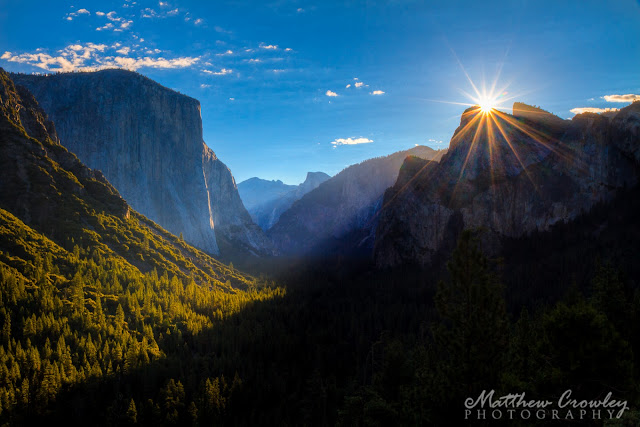 |
| "Good Morning, Yosemite" |
 |
| Sunset at Dead Horse Point |
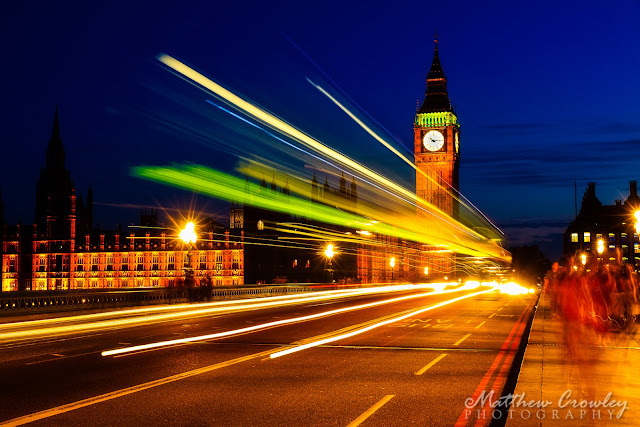 |
| "Time Flies By" |
- Bring only the photography equipment you plan to use. That stuff can get pretty heavy, going through the airport. If you don’t think you need it, it may be best to not bring it.
- Bring all of the most important items to you as carry-on. If your luggage gets damaged, lost, or sent to Winchestertonfieldville, Iowa, by accident, you’ll take comfort in the fact you can still take a photo.
- Before you go on that hike make sure you’re only bringing the subset of your photography equipment that you’ll need. Again, carrying all that stuff on a hike that you don’t need creates unnecessary wear on your body. Also bring plenty of water with you.
- Charge your batteries every night, before you go to sleep.
- If you have another device (or two) to unload your photos to, also do so every night.
- If you’re driving from one location to another, always make sure you have a camera ready and both a telephoto and a wide-angle lens handy. You never know what wildlife or grand scene you may encounter.
- Most importantly, have fun!
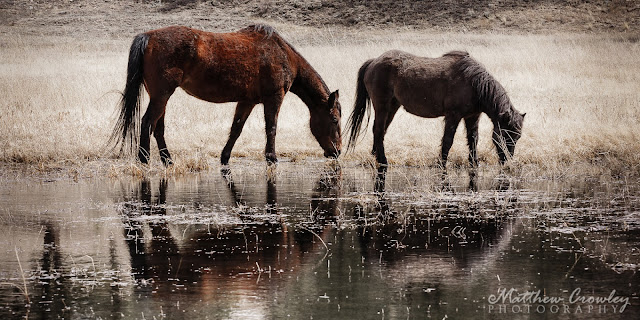 |
| "At the Watering Hole" |
 |
| "Open Range" |
 |
| "Pronghorn Dash" |
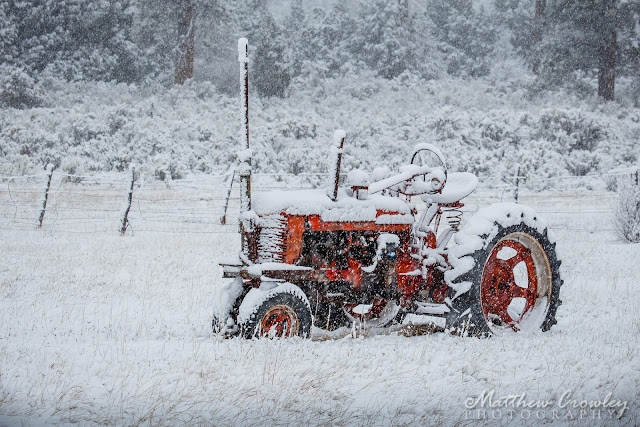 |
| "Snowy Tractor" |
